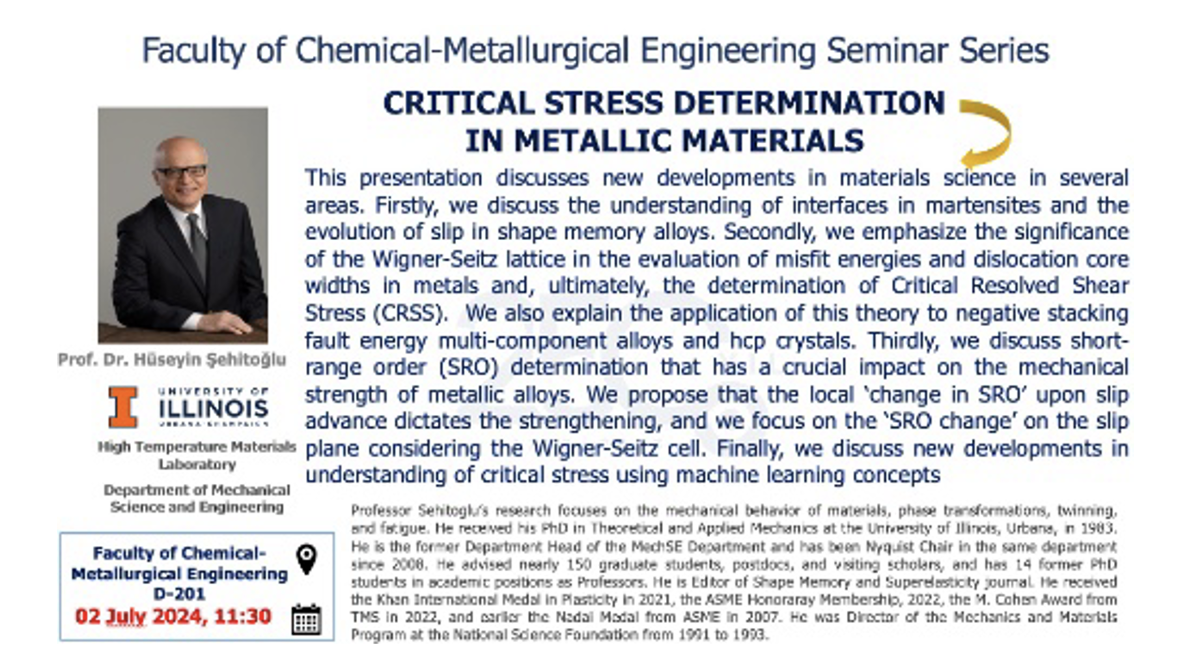by
Evren Demircan | Jul 10, 2024
Prof. Hüseyin Şehitoğlu from the Department of Mechanical Engineering at the University of Illinois Urbana-Champaign delivered a comprehensive seminar at our Faculty on July 2, 2024, presenting his research on the determination of critical stress in metallic materials.

Prof. Hüseyin Şehitoğlu from the Department of Mechanical Engineering at the University of Illinois Urbana-Champaign delivered a comprehensive seminar at our Faculty on July 2, 2024, presenting his research on the determination of critical stress in metallic materials.
In this presentation, groundbreaking new developments in the field of materials science were discussed. Firstly, the understanding of interfaces in martensites and the evolution of slip in shape memory alloys were explored in depth. Next, the critical role of the Wigner-Seitz lattice in evaluating misfit energies and dislocation core widths in metals, and ultimately in determining Critical Resolved Shear Stress (CRSS), was highlighted. Innovations in applying this theory to negative stacking fault energy multi-component alloys and hcp crystals were also detailed.
Thirdly, the vital impact of short-range order (SRO) on the mechanical strength of metallic alloys was examined. The presentation focused on how the local 'change in SRO' dictates strength as slip progresses, with a particular emphasis on 'SRO change' on the slip plane, considering the Wigner-Seitz cell. This in-depth analysis revealed how changes in SRO influence the durability of materials.
Lastly, new perspectives and innovations brought by machine learning concepts in understanding critical stress were discussed. These innovations offer a revolutionary understanding in materials science and engineering, paving the way for future research.